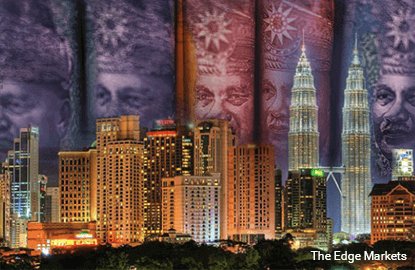
KUALA LUMPUR (June 8): Violence impacted Malaysia’s economy by US$30.3 billion (RM122.9 billion) or US$1,013 (RM4,112.5) per person, translating into 4% of the country’s gross domestic product (GDP) last year (year 2015), a drop of 9% from 2008.
This ranks Malaysia at the 30th spot out of 163 countries in the Global Peace Index (GPI) 2016, and number five among 19 countries in Asia Pacific, said international think-tank, Institute for Economics and Peace (IEP).
Malaysia has had fairly stable levels of peace with little change in the last decade, due in part to its relatively high levels of peacefulness with its neighbouring countries, it said in a statement.
IEP, which conducted the study of the GPI, added that Malaysia performs in the best band for neighbouring country relations.
“In 2015, violence containment expenditure in Malaysia totalled US$30.3 billion purchasing power parity (PPP), a decrease of 9% from 2008. At 4% of GDP, this was ranked 142nd in the world.
“Addressing the global disparity in peace and achieving an overall 10% decrease in the economic impact of violence would produce a peace dividend of US$1.36 trillion (RM5.52 trillion).
“This is approximately equivalent to the size of world food exports,” said IEP founder and executive chairman Steve Killelea.
The tenth edition of the GPI highlights a stark and growing inequality in global levels of peacefulness, as the gap between the most and least peaceful countries continues to widen, IEP said.
The study found that while 81 countries improved, the deterioration in another 79 outweighed these gains, meaning peace declined at a faster rate than in the previous year.
“While the global economic impact of violence dropped by 2% when compared to last year’s report, it was still a staggering US$13.6 trillion in 2015, equivalent to 11 times the size of global foreign direct investment.
“This represents 13.3% of world GDP or US$1,876 per person. In the last ten years, the economic impact of violence was US$137 trillion, greater than global GDP in 2015,” IEP said.
“The increasing internationalisation of internal conflicts has coincided with United Nations peacekeeping funding reaching record highs in 2016 (that) was the largest improved indicator in this year’s report, with more deployed peacekeepers and more countries being up-to-date with their UN peacekeeping dues.
“However, peacebuilding and peacekeeping spending remains proportionately small, [as] compared to the economic impact of violence, representing just 2% of global losses from armed conflict,” Killelea said.
The number of refugees and displaced persons rose dramatically over the last decade, doubling to approximately 60 million people between 2007 and 2016, nearly 1% of the world’s population.
Meanwhile, the Middle East and Africa (MENA) region came out as the least peaceful region in the world in last year’s report, due to intensified regional conflicts. Three of the five biggest declines in peace occurred in this region, including Yemen, Libya and Bahrain.
“While the majority of terrorist activity is highly concentrated in five countries — Syria, Iraq, Nigeria, Afghanistan and Pakistan — the breadth of terrorism is spreading, with only 23% of countries in the GPI not experiencing a terrorist incident,” IEP added.
On a different note, Europe, which remained a peaceful region in the world, saw its average score deteriorate this year, due to the terrorism incidences in Paris and Brussels.